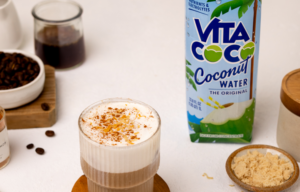25 September, 23
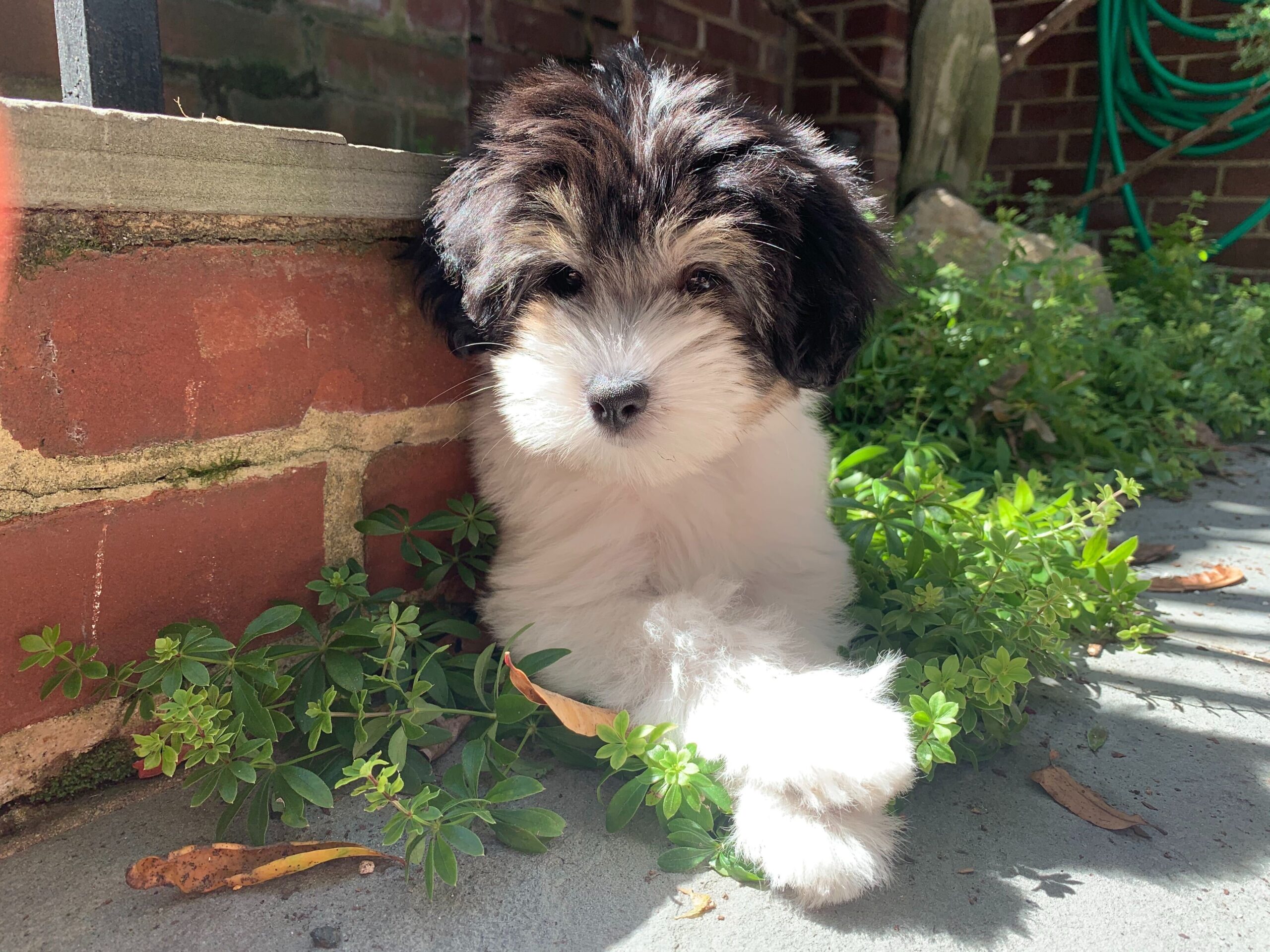
10 Common Plants That Are Poisonous To Dogs
While we tend to think of our dogs as members of the family, it’s important to remember that they do have different bodily systems than ours and experience the world very differently. While the plants in your garden are features of your home that you enjoy tending to and looking at, they may pose serious health risks to your dog. Of course, many older dogs would never consume a plant, but more curious dogs and puppies experience the world through their sense of taste and smell, making them much more likely to ingest a poisonous plant. Here are the ten most common plants to look out for that are poisonous to dogs.
Lily of the Valley
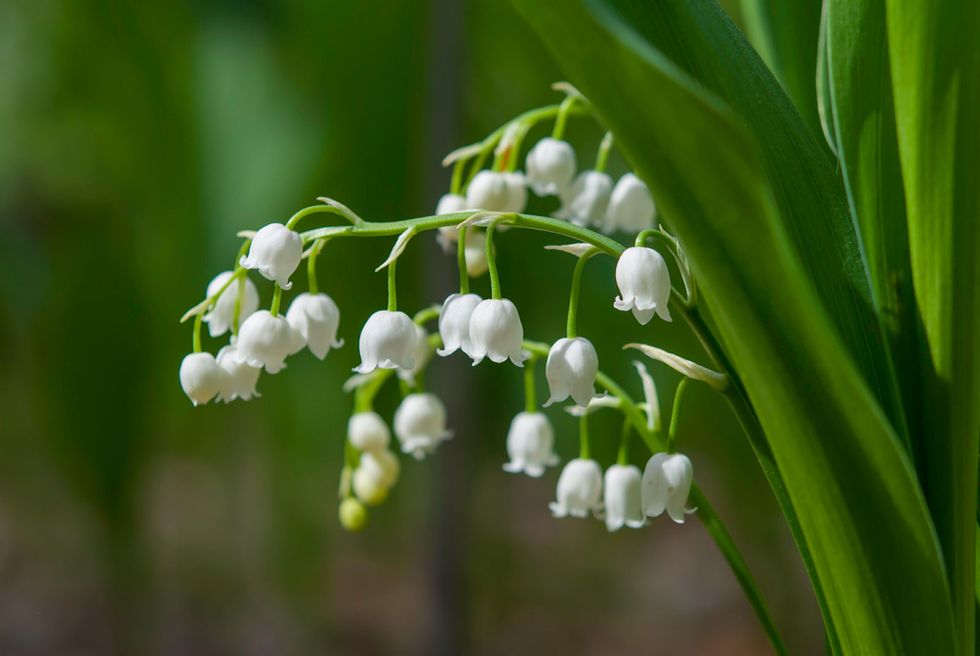
This delicate plant is a popular choice for many gardeners, but it could spell bad news for your furry friend. The liliy of the valley (Convallaria majalis) contains a chemical compound called cardiac glycosides which is extremely toxic to dogs if ingested. If your dog ingests this plant, symptoms may include vomiting, diarrhea, a drop in heart rate, severe cardiac arrhythmias, and even the possibility of seizures. If you know your pet has ingested any amount of this plant, take them to a vet as soon as possible as they may require urgent medical care.
Daffodils
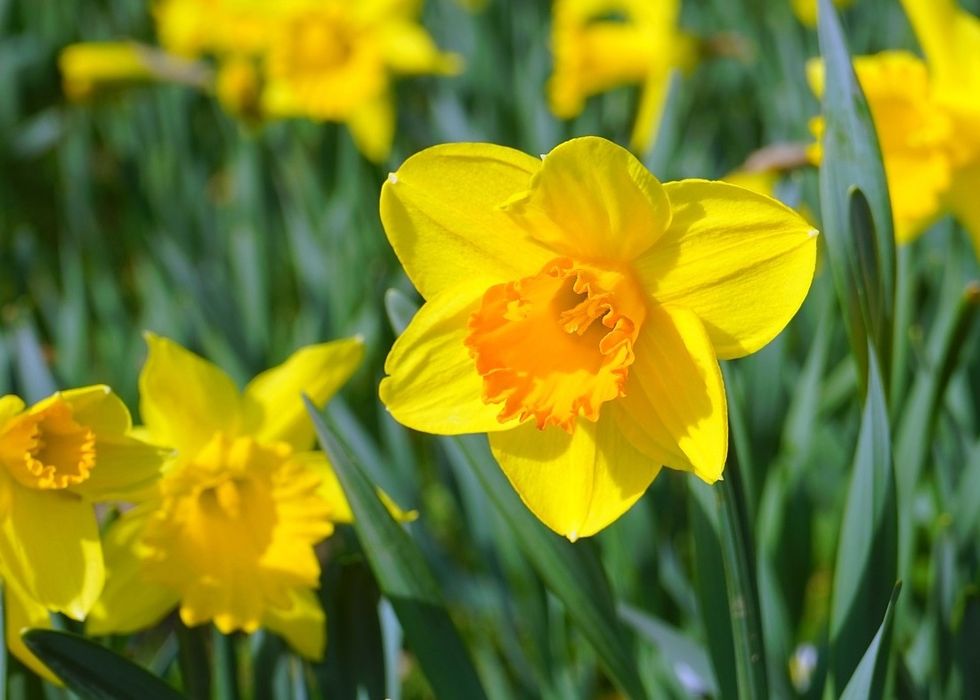
Nothing says spring quite like blossoming daffodils. These bright yellow flowers grow from bulbs, and are often found in private and commercial gardens. Daffodils contains lycorine, which is an alkaloid that can quickly trigger vomiting in your pet. Every part of the daffodil is poisonous to your dog, so if your pet ingests the bulb, plant, or flower it’s important you seek medical advice immediately. Lycorine can cause severe vomiting, diarrhea, abdominal pain, and even possible cardiac arrhythmias or respiratory depression. In addition, much like hyacinths, there are crystals on the outer part of daffodil bulbs that can cause additional problems (including excessive drooling) if ingested by your dog. Daffodils are particularly fragrant flowers which can make them enticing to curious pups, so make sure your dog is never left unattended around daffodils.
Philodendrons
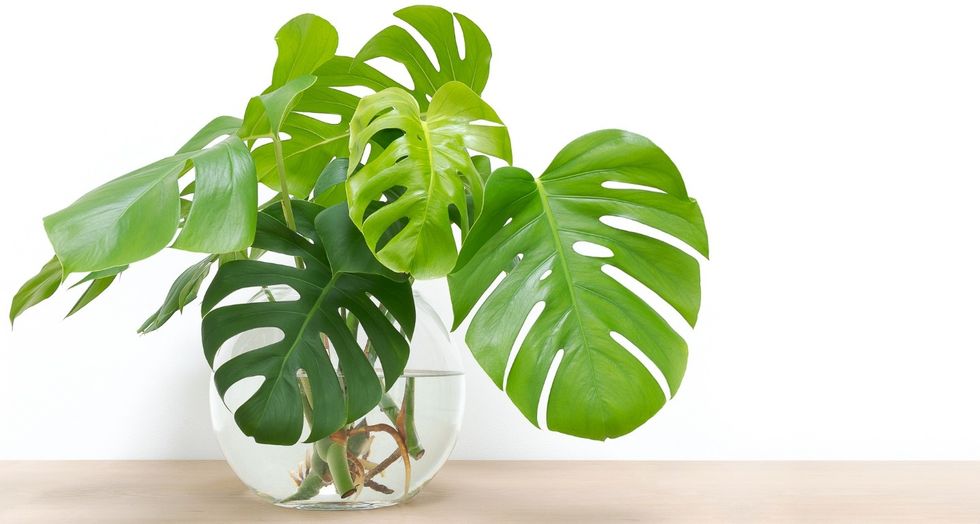
This plant, sometimes called a swiss cheese plant, is an extremely common indoor choice. If you have one of these in your home, make sure it’s not easily accessible to your dog as philodendrons contain insoluble calcium oxalate crystals. This chemical is unlikely to be fatal to your dog, but it can cause severe mouth and lip irritation and vomiting.
Rhododendron (Azaleas)
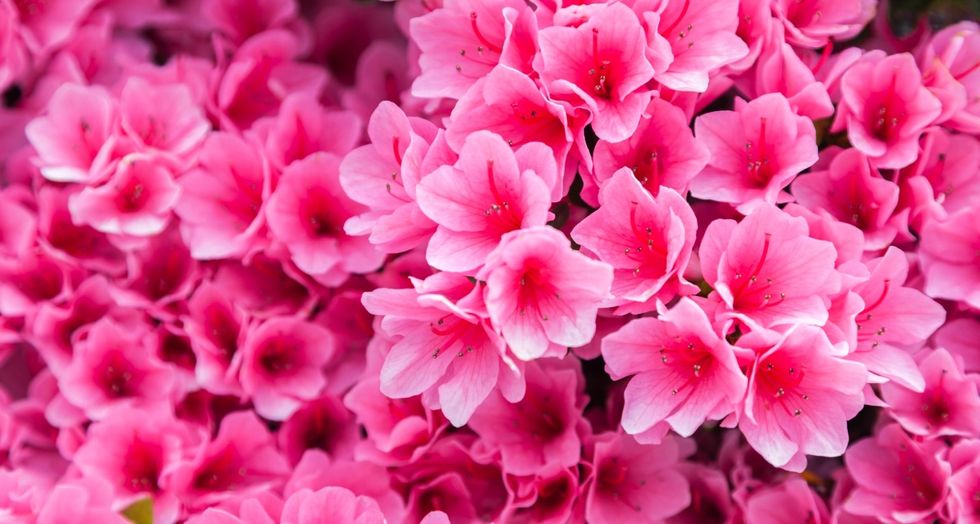
There are over one thousand kinds of rhododendrons throughout the world. The small species are referred to as the Azaleas and are very common all across America. The larger species is more shrub-like and are usually referred to simply as Rhododendrons. Both azaleas and rhododendrons are poisonous to dogs because they contain grayanotoxins which disrupt sodium channels, something that affects the skeleton and heart of your pet. The roots, stem, and flowers of this plant are all poisonous and it only takes ingesting a very small amount of any part of the plant for your dog to be poisoned and exhibit symptoms. Symptoms that may indicate your dog has ingested this plant include excessive drooling, gastrointestinal distress, and even cardiovascular symptoms including abnormal heart rate, heart arrhythmias, weakness, and hypotension. If the posioning is serious, they may also exhibit central nervous system signs such as tremors, signs of listlessness, blindness, seizures, and coma. Seek medical treatment or advice if your dog ingests this plant.
Oleander
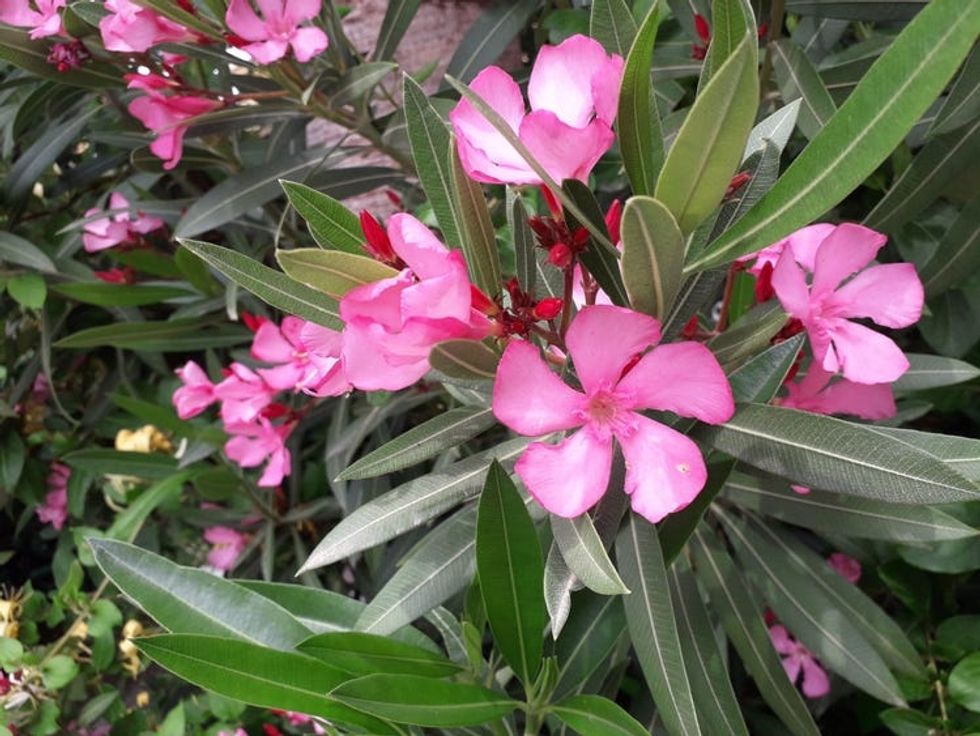
This evergreen outdoor plant is popular in warm climates that rarely see frost. Oleander contains poisons called cardenolides or bufadienolides, which are cardiac glycoside toxins, meaning they immediately damage the heart. This is one of the most toxic plants on the list and you should immediately seek emergency vet attention if your pet ingests oleander. All parts of these plants should be considered toxic, including the vase water that oleander flowers were sitting in.
Autumn Crocus
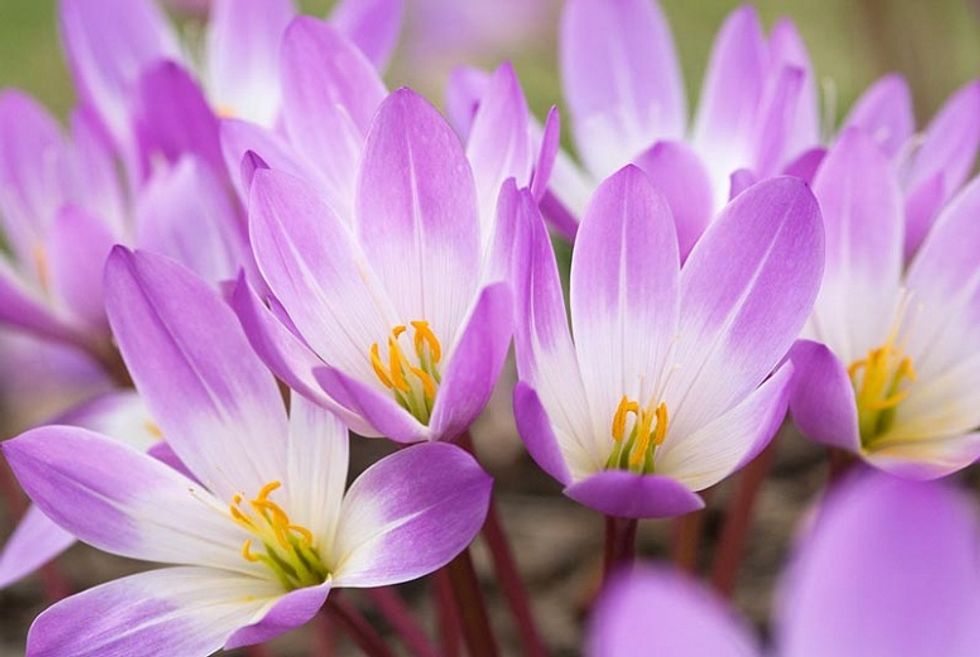
As it’s name indicates, the autumn crocus is a fall blooming flower. Later, after the flowers have died, the plant reveals it’s leaves and bulb. If your dog ingests any part of the autumn crocus at any part of the plant’s life cycle, poisoning can occur. The toxin in the autumn crocus is colchicine, and it can not only cause short term gastrointestinal distress when eaten, but can also cause long-lasting damage that can cause your dog’s body to suppress bone marrow and even go into eventual liver failure.
Dieffenbachia
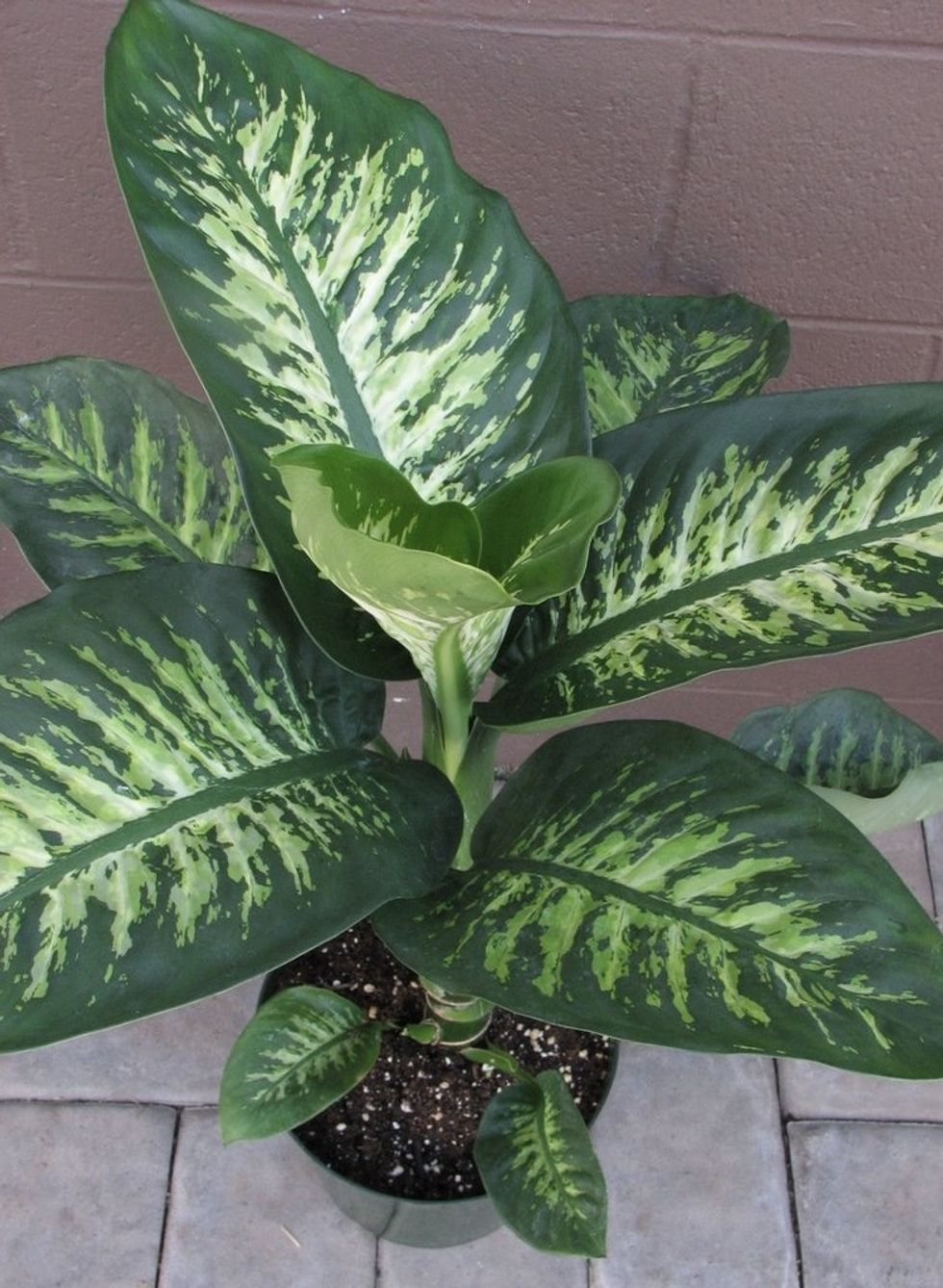
This popular indoor plant is known for it’s striking, mottled green leaves. Unfortunately, dieffenbachia contain calcium oxalate crystals, which means that if your dog ingests or chews on this plant they may experience tissue irritation to the mouth and lips as well as gastrointestinal distress. In some cases, but not often, this plant can cause swelling that makes it difficult for your dog to breathe adequately.
Cyclamen
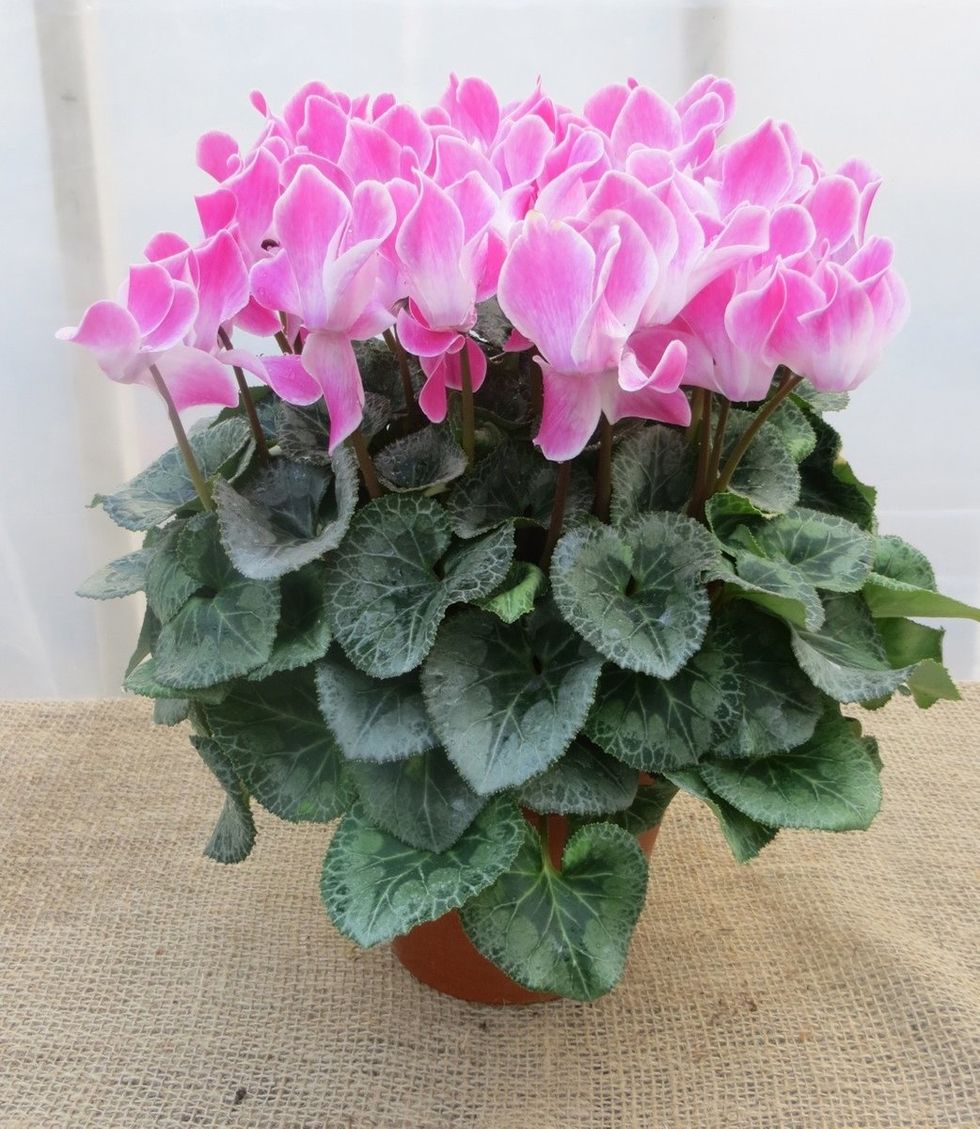
This very common plant is also sometimes called the Persian violet or Sowbread. If your dog ingests any part of this plant in small quantities, they’re likely to experience GI distress and excessive drooling on account of toxic saponins contained within the plant. If your dog ingests a large amount of any part of this plant, immediately seek medical attention as they may experience heart or neurological problems including heart attack, seizures, and in some cases even death.
Hyacinth/Tulip
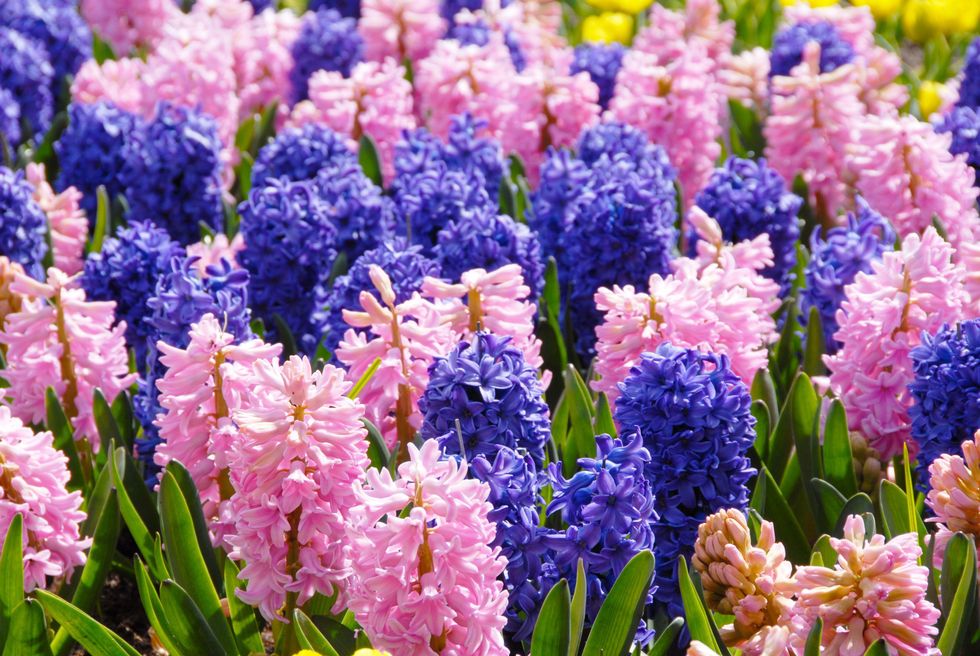
Both the hyacinth plant and the closely related tulip contain toxic alkaloids. While the leaves and flowers of these plants are toxic, the real danger is the bulb of the plant, which contains high levels of allergenic lactones. Your dog is unlikely to be severely poisoned by this plant unless they ingest a large number of bulbs, but always consult a vet if you suspect they have consumed any amount of a hyacinth or tulip plant.
If your pet ingests this plant you’re likely to see symptoms of tissue irritation around the mouth and throat, as well as symptoms of GI distress like drooling, diarrhea, and vomiting. If the dog consumes a lot of hyacinth or tulip bulbs, the symptoms may be more serious and include heart rate changes and trouble breathing.
Sago Palm
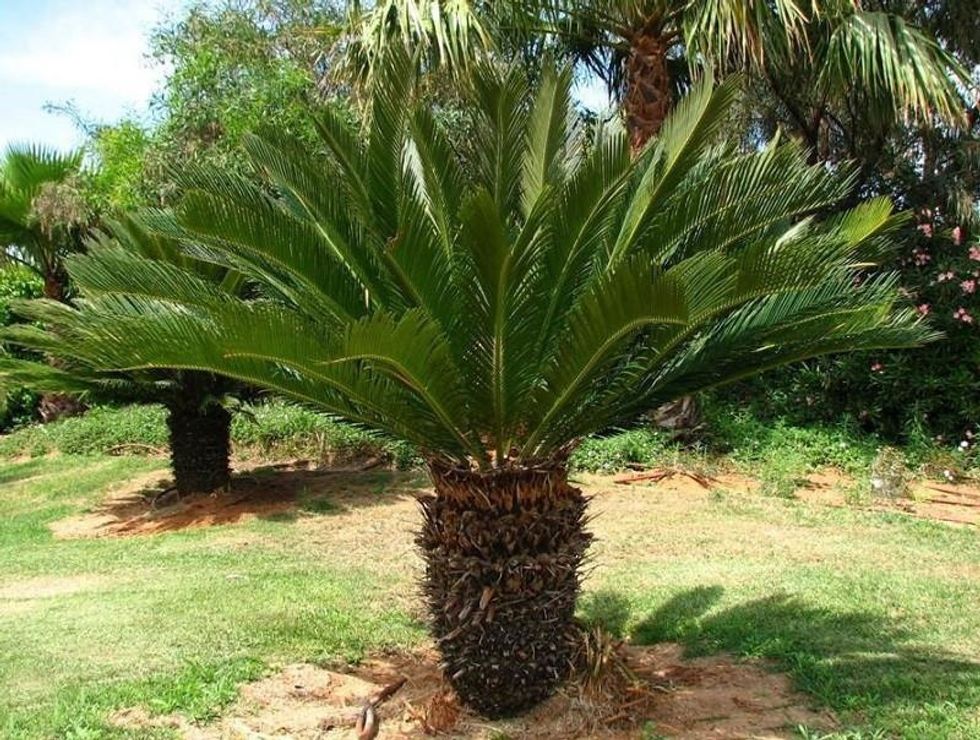
The leaves and seeds of this common warm weather plant are both extremely toxic to dogs if ingested. If your dog has consumed small amounts, you can expect symptoms of GI distress that can be so severe as to included bloody stools, irritation and laceration to the stomach lining, and even liver failure.
While this list covers many of the common culprits of dog poisoning incidents, it’s by no means an exhaustive list. If you suspect your dog has ingested any plant or you notice abnormal symptoms or behavior, be sure to consult a vet immediately.
For a longer list of plants that may be poisonous to your dog, consult the Pet Poison Helpline.

